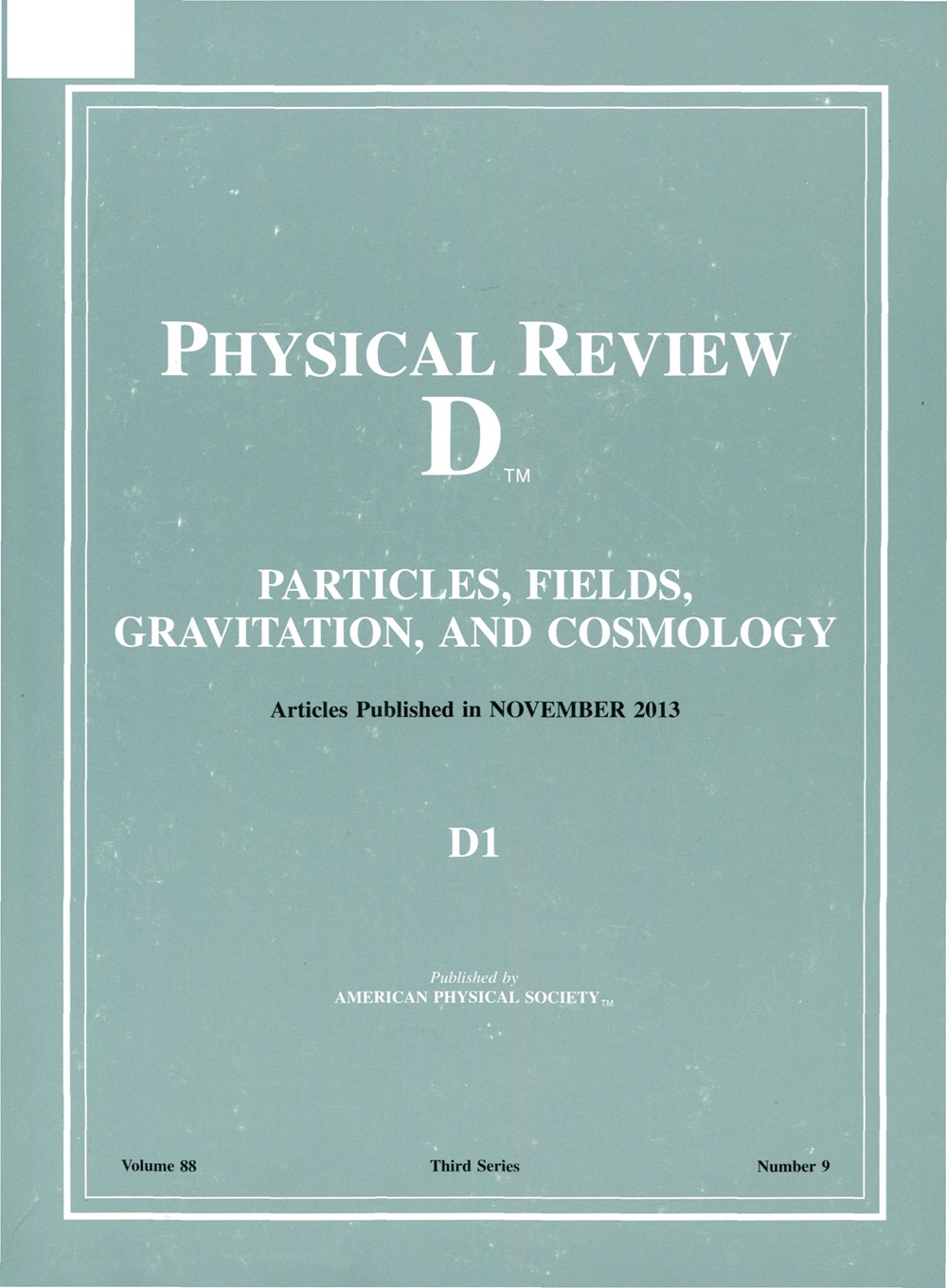强子-夸克混合模型,模变换,和Roberge-Weiss跃迁
IF 5.3
2区 物理与天体物理
Q1 Physics and Astronomy
引用次数: 0
摘要
在模变换的框架下,当引入假想重子化学势时,我们重新表述了最近提出的强子-夸克杂化模型。在这种情况下,混合模型的数密度由重子(反重子)和夸克(反夸克)的复数密度的模变换得到。我们可以把这些数字密度作为复平面中的基。因此,我们可以考虑环面,它的特征是基。由于环面的复杂结构在模变换下是不变的,我们可以利用未变换的重子(反重子)和夸克(反夸克)数密度提取强子-夸克系统的拓扑性质。我们应用这个模型来分析Roberge-Weiss转换。由于重子(反重子)的数量密度与夸克(反夸克)的数量密度不是线性无关的,因此环面在重子化学势出现的地方消失。当温度T低于Roberge-Weiss转变温度TRW时,环面在Roberge-Weiss转变点平滑收缩为一维物体,但不出现不连续现象。另一方面,当T>;TRW时,几何对象出现不连续。我们还计算了环面的模量,并将其转化为基本区域。变换模在TRW以下是对称的,但在TRW以上对称性被打破。2025年由美国物理学会出版本文章由计算机程序翻译,如有差异,请以英文原文为准。
Hadron-quark hybrid model, modular transformation, and Roberge-Weiss transition
In the framework of modular transformations, we reformulate the recently proposed hadron-quark hybrid model when the imaginary baryonic chemical potential is introduced. In this case, the number density of the hybrid model is obtained by the modular transformation of the complex number densities of the baryons (antibaryons) and the quarks (antiquarks). We can regard these number densities as the basis in the complex plane. As a result, we can consider the torus, which is characterized by the basis. Since the complex structure of the torus is invariant under the modular transformation, we can extract the topological property of the hadron-quark system using the untransformed baryon (antibaryon) and the quark (antiquark) number densities. We apply this model to analyze the Roberge-Weiss transition. It is shown that the torus vanishes at the baryonic chemical potential where the Roberge-Weiss transition appears because the number density of baryons (antibaryons) is not linearly independent of the number density of quarks (antiquarks). When the temperature T is lower than the Roberge-Weiss transition temperature T RW T > T RW T RW T RW Published by the American Physical Society 2025
求助全文
通过发布文献求助,成功后即可免费获取论文全文。
去求助
来源期刊

Physical Review D
物理-天文与天体物理
CiteScore
9.20
自引率
36.00%
发文量
0
审稿时长
2 months
期刊介绍:
Physical Review D (PRD) is a leading journal in elementary particle physics, field theory, gravitation, and cosmology and is one of the top-cited journals in high-energy physics.
PRD covers experimental and theoretical results in all aspects of particle physics, field theory, gravitation and cosmology, including:
Particle physics experiments,
Electroweak interactions,
Strong interactions,
Lattice field theories, lattice QCD,
Beyond the standard model physics,
Phenomenological aspects of field theory, general methods,
Gravity, cosmology, cosmic rays,
Astrophysics and astroparticle physics,
General relativity,
Formal aspects of field theory, field theory in curved space,
String theory, quantum gravity, gauge/gravity duality.
 求助内容:
求助内容: 应助结果提醒方式:
应助结果提醒方式:


